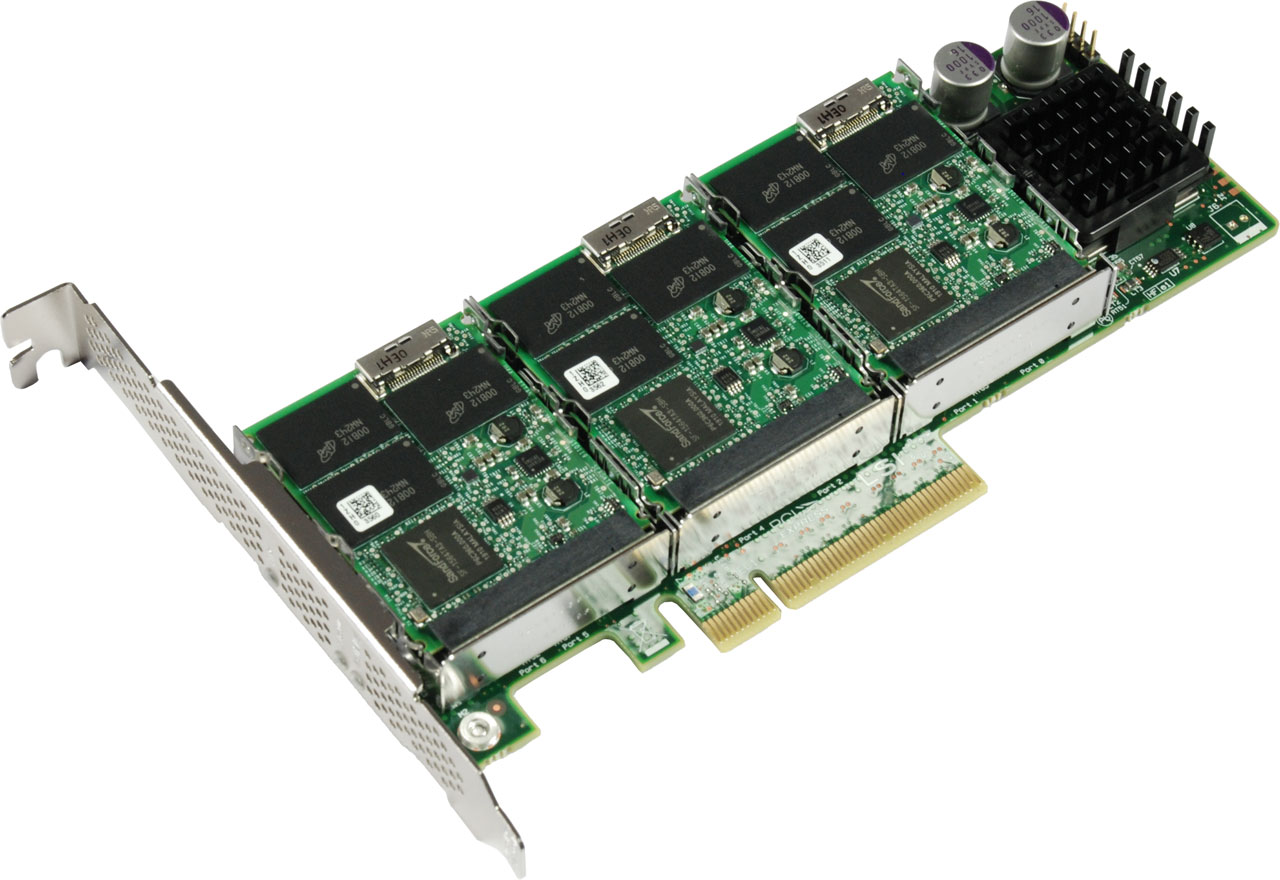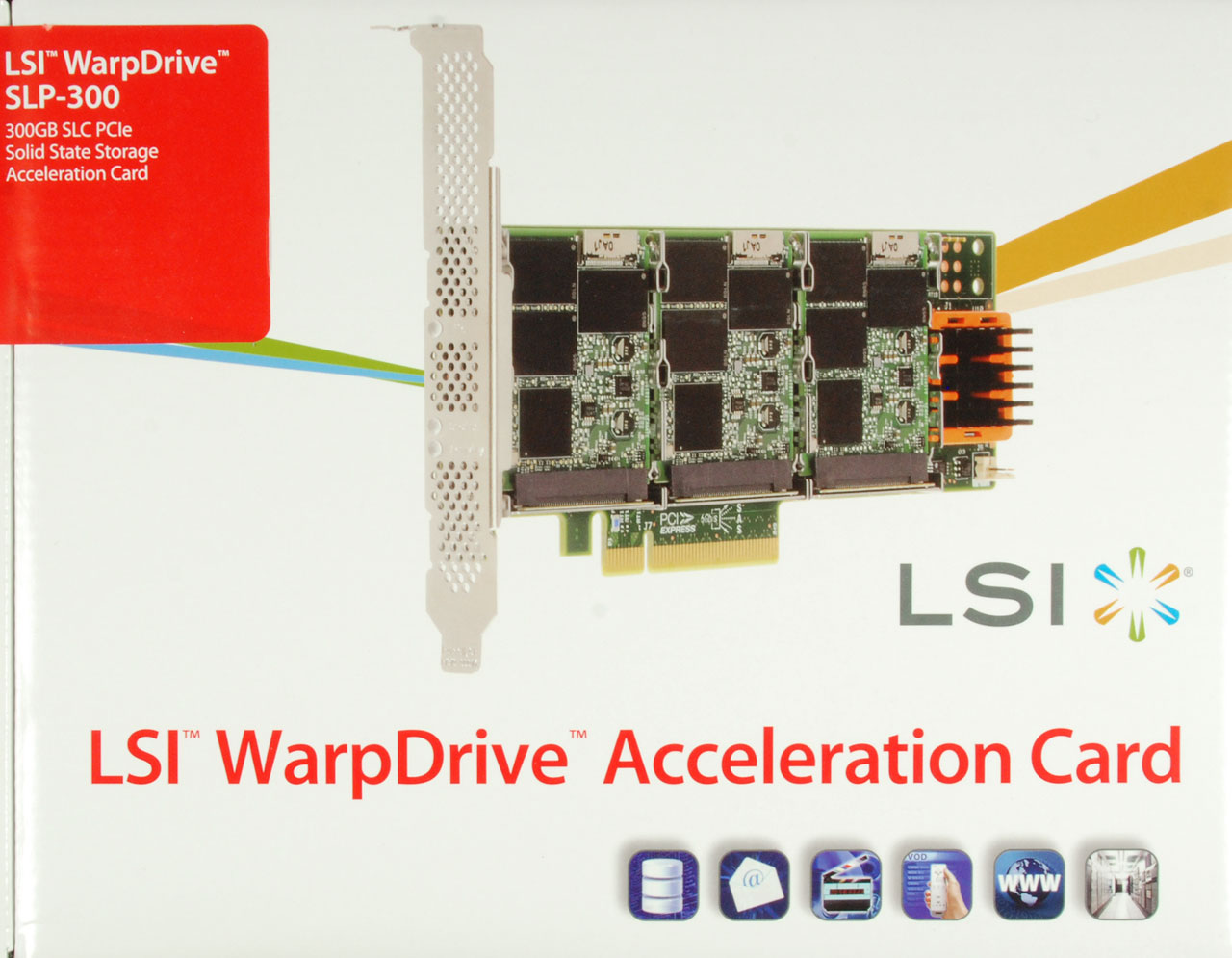Three PCI Express-Based SSDs: When SATA 6 Gb/s Is Too Slow
When it comes time to hunt down the ultimate in storage performance, you simply cannot settle for standard SSDs. Instead, look to PCI Express-based drives that circumvent the limitations of SATA. We have products from Fusion-io, LSI, and OCZ on the bench.
LSI WarpDrive Acceleration Card SLP-300 (300 GB)
Firmware: 01.03.00.00
Driver: 2.10.38
LSI continues to aggressively design and launch 6 Gb/s SAS storage products. We are currently testing the new MegaRAID SAS 9285-8e, which is supposed to drastically improve I/O performance thanks to its dual-core PowerPC-based RoC. The WarpDrive Acceleration Card is a logical evolution of the product line. After all, the same enterprise workloads targeted by Fusion-io can be called LSI's traditional hunting grounds.
Consequently, it makes a lot of sense to provide an out-of-the-box SSD storage product for enterprise environments. LSI simply combines its LSISAS2008 storage controller with six flash storage modules. Each of them connects to one of the controller’s ports and holds 64 GB of SLC NAND flash memory. Only 50 GB of this capacity is available; the other 22% is set aside for over-provisioning, allowing the drive to maintain its performance over time.
SandForce SF-1500 controllers manage each of these SSDs in much the same way you'd connect multiple drives to an on-board storage controller. It would have been nice to see the card include two additional SAS or SATA ports to add additional storage, but that's not the case with the SLP-300. We have to love the fact that the SLP-300 is bootable, meaning that you can use it to install your operating system.
Compared to the Fusion-io solution, the LSI card creates a bank of SATA SSDs that are used within a RAID array administered by the LSI hardware. The approach makes sense because it is very modular. Of course, what matters most is the end result though, as mentioned in this story's introduction. If a RAID-based happens to deliver stellar performance using standard components, that's just fine by us.
All six SSDs are mounted directly onto the card in two layers. We believe that this approach could be great with mSATA, as this relatively new standard could be utilized to insert flexible SSDs into such a storage card.
Despite its massive SSD slots, the card is still half-height and half-length and suitable for 2U rack-mounted servers. We also want to add that this card utilizes a x8 PCI Express 2.0 interface, meaning you'll need an available eight- or 16-lane upgrade slot. Thanks to the second-gen PCI Express standard, the card has a theoretical maximum bandwidth of 4 GB/s upstream and downstream. It does not really need this, but it’s there.
Get Tom's Hardware's best news and in-depth reviews, straight to your inbox.
Current page: LSI WarpDrive Acceleration Card SLP-300 (300 GB)
Prev Page Fusion-io ioDrive (160/112 GB) And ioXtreme (80 GB) Next Page OCZ Ibis (240 GB)



